The fact that we are taking this class alongside fellow farmers really enriches the experience and we often gain insights from one another that is just as valuable. Working together has really helped build my confidence too. It has made the farm business feel more real. I know that is an odd thing to say/feel but there is this subsconscious tendency to feel negated because you are a small farm and I am not going to let myself do that anymore. Adam & I work way to hard to feel like it's for nothing. We grow valuable food!
I am doing this to ensure I have a wide variety of high quality crops for the CSA. I want to be able to harvest crops that were never sprayed. I want to be able to pick out the best of what we have for our CSA. I want to be able to surprise CSA members every week with something new. I want to be able to have a bumper crop of tomatoes and basil so I can say "thank you for supporting our farm!" As I started to answer the "why" I started to feel better about it.
So I say to all the small farmers out there. When you are in doubt or feeling lost just ask yourself why you are doing what you are doing? Don't get sucked into what other farms are doing because your farm is an extension of you and your values. There isn't a right way or wrong way even though it may feel that way. Be Stubborn, Farm on!
Courtney
0 Comments
OUR CSA VIBE
WOLFVILLE FARMERS' MARKET
WFM2GO (ONLINE ORDERING)
Squash Breeding ProjectHere's one of our breeding projects on the farm. We allow different varieties of squash to cross-pollinate and then save the seeds each year. The goal of this is to end up with a squash that is perfectly adapted to growing in the Annapolis Valley and has excellent flavour, is a vigourous grower and will store for a long time through the winter. Saving seeds has become more and more of a fascination for us each year once we learned how easy it is! Many vegetable seeds can be saved simply by removing them from the mature fruit and placing them in a container of water overnight, the viable seeds will sink to the bottom and the duds and other matter will float to the surface which can then be poured off. The remaining seeds can be placed on a cloth or paper towel next to a window to dry, then when they are fully dry place them in a bag for planting next year! If you are still unsure if the seeds are viable, take a few of them and place them in a ziploc bag with a wet paper towel and just wait to see if they sprout! Seed-saving and the breeding of new varieties is how all the types of vegetables we now enjoy have come to be. Through all the hard work of the countless generations before us we now get to enjoy such a diversity of delicious food. For example, the corn that we now have was bred from a grain called Teosinte in what is now Mexico, and watermelon was bred from a bitter fruit with hard green flesh in the Kalahari. It's such an amazing thing to think about how much we benefit from our ancestors hard work, and it's definitely an honour to continue to work with what is literally their artwork that sustains and nourishes us. This is not just a squash, it's our history in edible form! Silver Slicer CucumberHere is a variety of cucumber that our CSA members and market goers will be very familiar with- Silver Slicer Cucumber! We've been growing this type almost since we began Olde Furrow Farm and it has consistently been a favorite of ours and many, many people that try it! It's sweet, juicy and perfectly crunchy with not a hint of the bitterness that green cucumbers can sometimes get- you can eat it skin and all. We like to pick them a little smaller because they tend to be even sweeter and crunchier at that size. Even looking at the pictures makes me think of the heat of the middle of summer and the refreshing bite of one freshly pulled off the vine (which happens quite often while they're being weeded). Our Unique NasturtiumsThese are our beautiful and tasty Nasturtiums! We've saved seeds from them for several years now, picking out our favourite colours and letting them freely mix. The original seeds already produced beautiful flowers but over the years we've seen more pastel and bi-colour ones pop up which is always exciting! Nasturtium flowers are edible and have a nice spicy flavour, and the leaves do as well. They go great on top of salads. The plants are really easy to grow and can get quite large in optimal conditions, and when planted next to many other vegetables they are a pest deterrent. Bees love them! Ali Baba WatermelonAli Baba Watermelon - A delicious heirloom watermelon from Iraq. We grew these for the first time last year and we LOVE them. They have the best flavour out of any watermelon we've tasted or grown, and they get HUGE (30-40 lbs were some of the biggest)! In these pictures you can see them filling up our large harvest container and you can see me (Adam) cutting up one of the "small" ones. They are also shaped oblong which makes them easy to cut into chunks for the CSA shares. It's true that we had to harvest them a little early this past year because of an imminent frost (so they didn't achieve their full colour on the inside) but even then they tasted amazing. They are certainly high on the priority list for the upcoming growing season! It's surprising that a watermelon from such a hot country like Iraq would do so well in cool and wet Nova Scotia, but once you take into account this is an heirloom that has been grown for thousands of years by different people in different weather, shared across different lands and different growing conditions it's a little less surprising that it did well. That's why heirlooms are so important! (and new varieties bred from heirlooms). They have stood the test of time for surviving and flavour. Compare this with "commercial" varieties of vegetables which you get in the grocery stores, they are inbred over many, many generations to get the uniform shape that they think customers want, and they select more for storability and their ability to stand up to shipping then for flavour and nutrition, because if it lasts longer on the shelf it's more likely to be bought and that's more money in their pockets! Commercial varieties also are overwhelmingly sprayed by pesticides and herbicides over years and years, so each generation is less able to survive in natural growing conditions. Heirlooms are important because all those adaptable genetics haven't been bred out of them, and with the unpredictability of future weather due to climate change we are going to need these strong, resilient and nutritious varieties of vegetables. We are so thankful for all the people that are keeping the good old vegetables alive both by growing them and by buying them! (You vote with your wallet after all) - nobody would have access to these delicious foods otherwise. Passamaquoddy SunchokesPassamaquoddy Sunchokes! They are a pretty amazing vegetable to grow since you harvest them like a potato and they grow like a sunflower! (over 6 feet tall) They are also super productive- you easily get 1lb per plant. They are great food for the bees since they bloom so late in the season, around the end of September, when most other flowers are done. They will certainly play a large role in the future as an incredibly important food source (as they have since time immemorial for Native Americans) since they are pretty tough to kill and provide plentiful food year after year even in adverse conditions. They are very nutritious, more so than potatoes, containing more much more iron as well as inulin- a carbohydrate that doesn't metabolize in the body- meaning it's completely safe for diabetics to eat! We've found that not everybody likes these guys, and that's understandable because they have a very noticeable flavour (as opposed to something like carrots or potatoes). We've determined that the flavour is similar to the one you get with sunflower seeds, but others have said they taste like artichokes. Another reason some don't like them is because they give some people gas, but over time we've found that really cooking them down more than you would a potato is the tastiest way to have them, as well it reduces the chance of gas. If you are part of our CSA this year just let us know if you don't like them and we will substitute for something else! On the other hand, if you really like them, and have a patch of garden soil you are not using, you could take one and bury it about an inch or 2 down and you will have sunchokes until the end of your days! You can plant them pretty much any time the soil is unfrozen (before August if you want a decent harvest). They will even last in the frozen ground over the winter, getting sweeter tasting by the spring- that's where most of ours are right now- just waiting to be harvested for market goers in May. This specific variety was made available to the public through Hope Seeds and we find it to be the tastiest and best looking of the kinds we've tried. They are originally from Grand Manan Island, New Brunswick. Brandywine TomatoBrandywine Tomato - one of the best tasting tomatoes ever, in fact it might just be the perfect tomato. Anyone who's tried these before can attest, there's regular tomato flavour and then there's Brandywine, it on a whole other level. It's fruitier, juicier and more tender than a lot of tomatoes and it gets huge, 1lb or more, perfect slices for sandwiches with mozzarella and basil.
Brandywine tomatoes are said to be the single most popular heirloom vegetable, and they also contributed greatly to the recent growing interest in heirlooms. They are not the most carefree tomatoes to grow however- they need to be started early because they are a late-season tomato, they tend to get a bad spot if they are touching moist soil, their skin splits if they get alot of rain at once, and we've found the pheasants on the farm really like to take little test-bites out of them! However, even with all those drawbacks, the flavour is still worth it. We actually had our best Brandywine year ever in 2018! While other vegetables had trouble in the hot and dry weather these guys thrived. We've saved seeds for these basically since we started farming, they are always a top priority to save for sure. The best way to store tomatoes for flavour is to keep them outside of the fridge, yes they won't last as long but you will get the full fresh-off-the-vine flavour much longer. Grocery store tomatoes are harvested when still green and then ripened artificially by ethylene gas to turn them red. They do this because it allows them to be shipped farther and store longer, because they stay harder-skinned like an unripe tomato - this decreases the flavour and nutrition of tomatoes. That's why when you pick up a tomato at the Farmers Market they have more "give" to their skin, it means they are ripened naturally on the plant! It's a good thing! |
AuthorOlde Furrow Farmers!! Archives
March 2024
Categories |
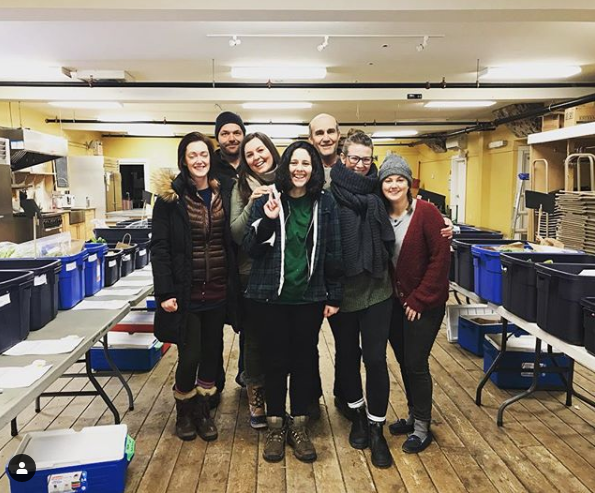
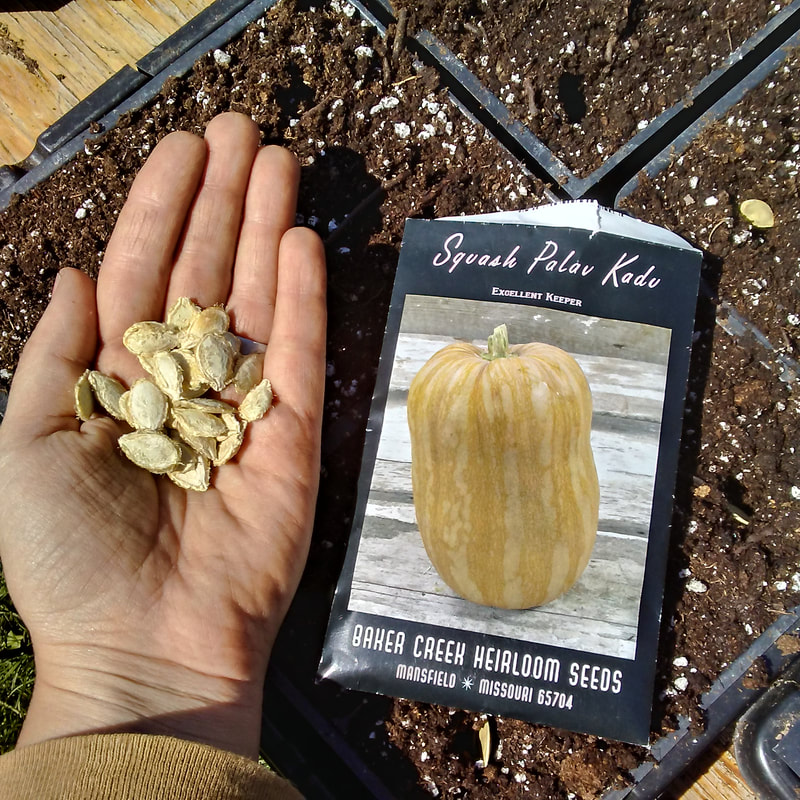


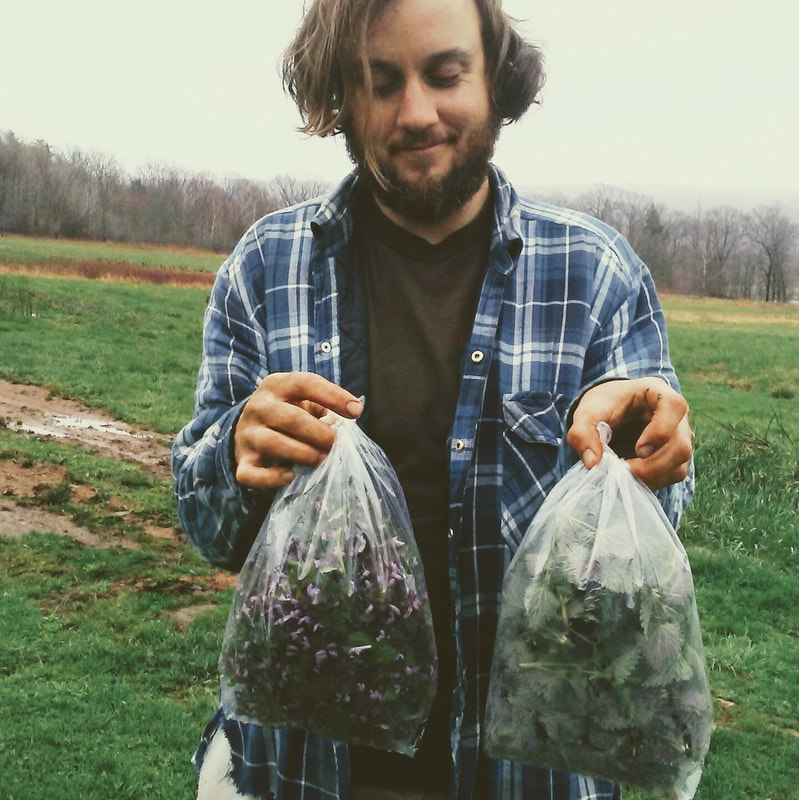




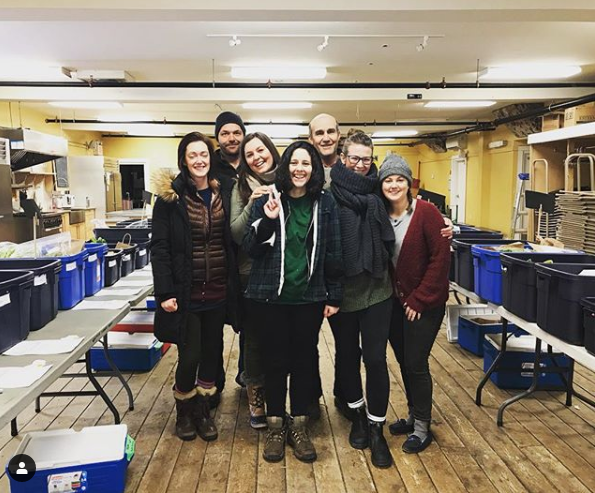
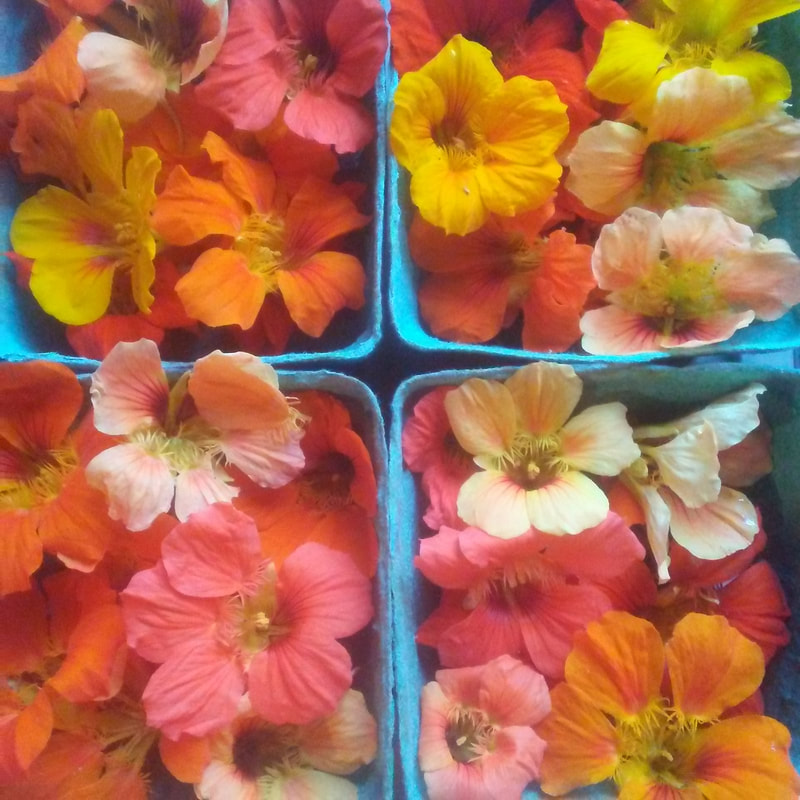
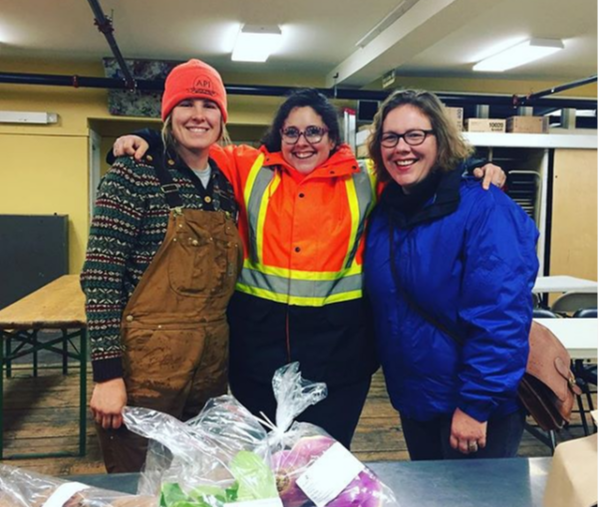


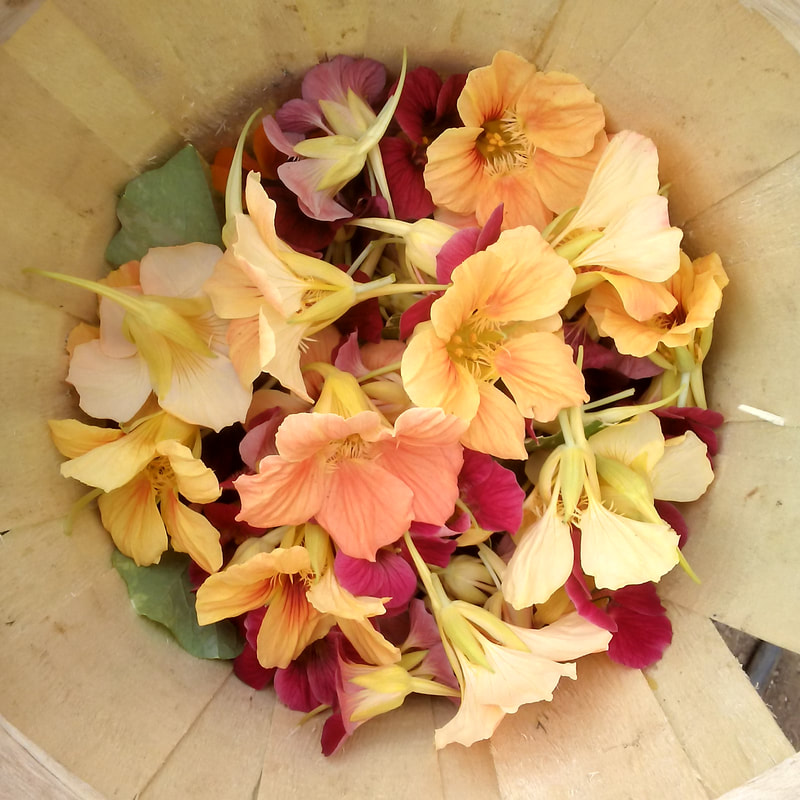
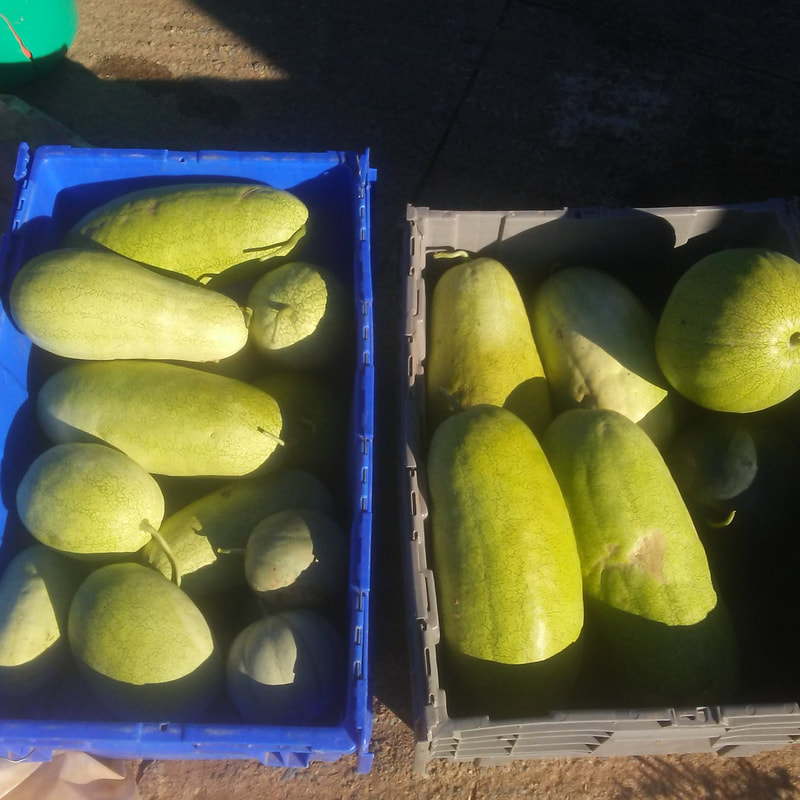


 RSS Feed
RSS Feed